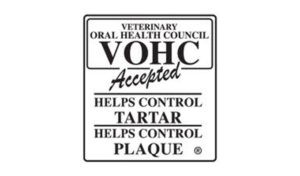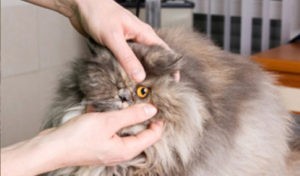 Fleas are everywhere. Even the cleanest, most pampered pets can get fleas and once inside your home, fleas can spread rapidly. Depending on where you live, the risk of flea infestation diminishes somewhat in colder months because freezing temperatures kill off many outdoor pests, but infestation remains a year-round concern as there are many warm places where fleas can thrive. The good news is that there are effective products to help prevent your pet from becoming infested.
Fleas are everywhere. Even the cleanest, most pampered pets can get fleas and once inside your home, fleas can spread rapidly. Depending on where you live, the risk of flea infestation diminishes somewhat in colder months because freezing temperatures kill off many outdoor pests, but infestation remains a year-round concern as there are many warm places where fleas can thrive. The good news is that there are effective products to help prevent your pet from becoming infested.
Overview
These small, wingless insects are common pests of wildlife such as raccoons and rabbits. As wild critters crawl around your yard, they deposit flea eggs that grow into adult fleas seeking a home. Wandering pets offer the new crop of fleas a safe haven, a source of food (blood), and a good place to raise a family. In addition to these sources, pets can pick up fleas from other infested dogs or cats.
The scratching caused by fleas can lead to skin damage and secondary infection. Fleas can also pass on diseases such as tapeworm, cat scratch disease, and blood parasites. Getting rid of fleas from your pet and your home can be a major chore in some cases, so it is best to focus on preventing them.
Life Cycle
Adult fleas usually spend their entire lives on a host animal, where they feed, mate, and produce eggs. Once laid, flea eggs drop to the ground, hatch, and develop into larvae that feed on organic material. The bedding of infested pets is often loaded with eggs and larvae that are too small to be noticed. After a while, these larvae spin a cocoon and develop into pupae and then into adult fleas that hatch out and seek another pet (or the same one) on which to live.
In the winter, freezing temperatures can kill off eggs and larvae in the environment, but not those living in sheltered havens such as nests, burrows, and your living room. It’s easy to see how even a single pair of fleas can lead to a massive household infestation over a period of weeks to months.
Signs and Identification
Fleas are very small and difficult to find because they hide within the thick hair coats of dogs and cats. Adults look like small reddish-brown sesame seeds. They can occasionally be seen scurrying in the hair coat, especially around the neck and ears, along the rump and tail head, and in the underbelly and groin areas (where thinner hair can make them easier to see). But often, the only sign of a flea problem is your pet’s scratching and biting, which can produce raw areas of skin infection.
In many instances, pets can become allergic to fleas, so that even a single bite sets off intense itching and red, sore, infected “hotspots.”
Sometimes, you may also see “flea dirt,” which is dried-up flea excrement. If you brush this gritty material out of the hair coat onto a white sheet of paper or paper towel, you’ll notice individual, reddish brown crusts that look like tiny commas. If you add a drop of water, you’ll see a brown ring around the “dirt” as the digested blood leaches out into the paper. If an area is heavily infested, you may even see bites on people, usually around the ankles, from newly emerged adult fleas seeking their first blood meal.
Treatment
Many products are available to kill fleas and prevent their reproduction. These products are generally safe and effective, and many last for a month or longer after a single application. Most monthly preventives are topical products that are applied to the skin between the shoulder blades or along the backline of dogs and cats, but some products come in pill or collar form. Your vet can help you decide which one is most appropriate for you and your pet.
Monthly treatments have largely replaced sprays, powders, dips, and flea collars that were mainstays of years past. If desired, some insecticidal sprays and shampoos can be safely applied in combination with monthly treatments. Ask us to be sure these pesticides are safe when used in conjunction with monthly topical or oral medications. Always make sure to read labels carefully and heed all directions and warnings! And never use a canine flea product on a cat!
Judicious, consistent use of the most effective treatments will eventually eliminate flea infestations over time. To speed up the process, you can also use indoor and outdoor insecticides to kill off fleas around the home. Similarly, thorough washing of pet bedding and vacuuming carpets and upholstery will help remove many immature flea stages before they can turn into adults that jump onto your pet.
Most pets have no side effects when flea treatments are used correctly. If you’re worried about using man-made chemicals, ask your vet about “natural” flea control. But be warned, some so-called natural products are much less effective and can in some cases be more toxic than their man-made counterparts.
This blog was written by McQueen Animal Hospital, an animal clinic (vet hospital/vet clinic) in Brampton committed to providing only the highest level of veterinary care to our beloved pets.




